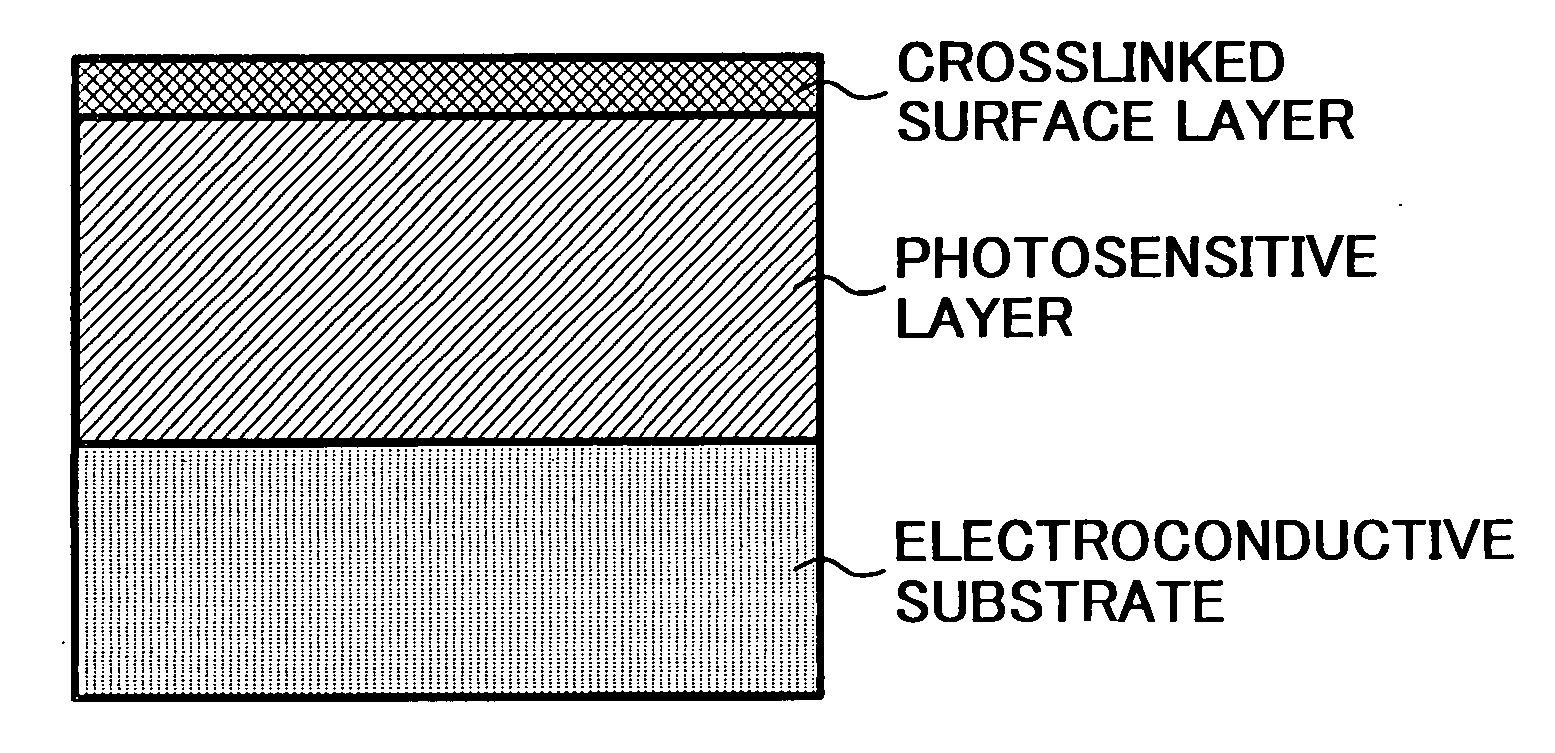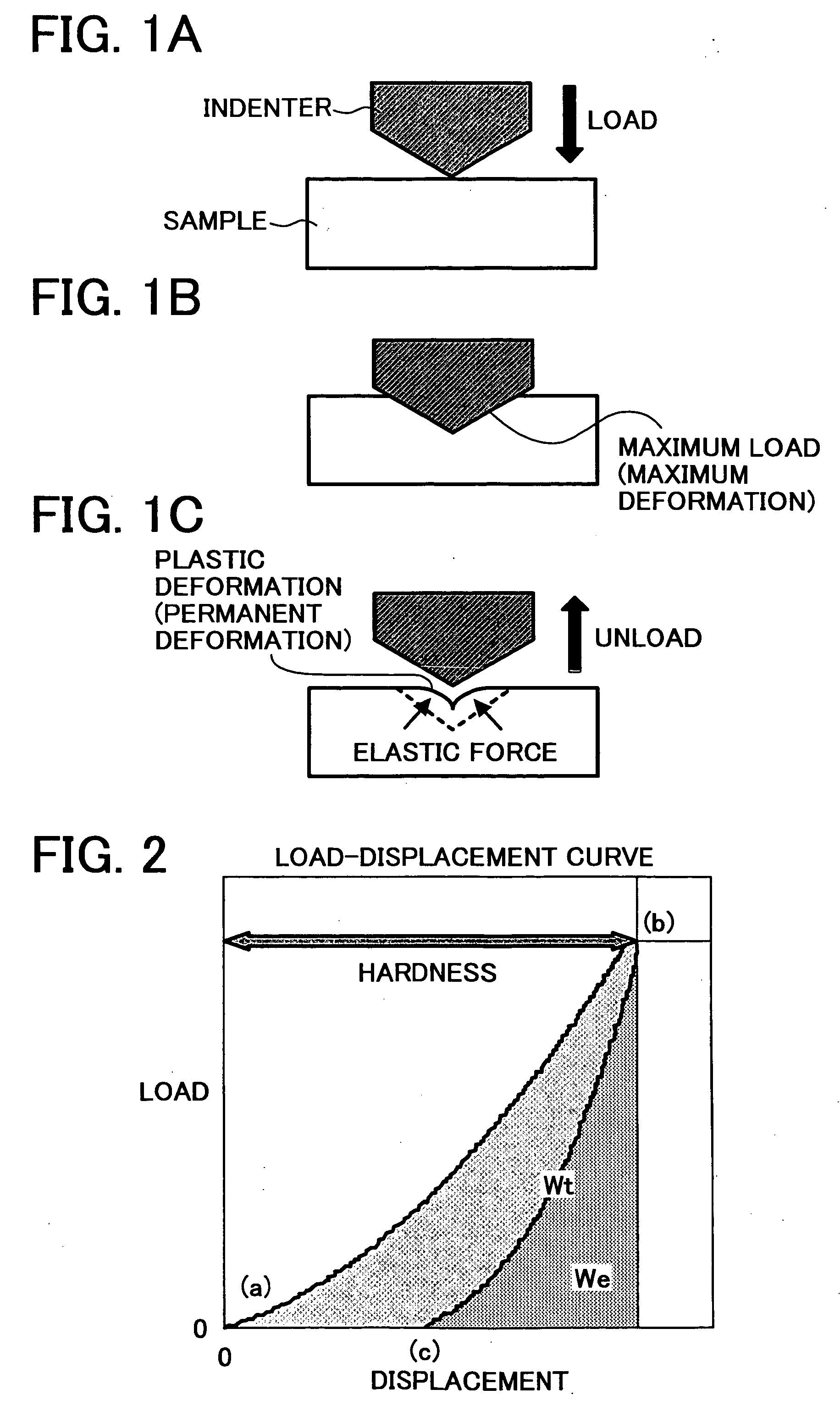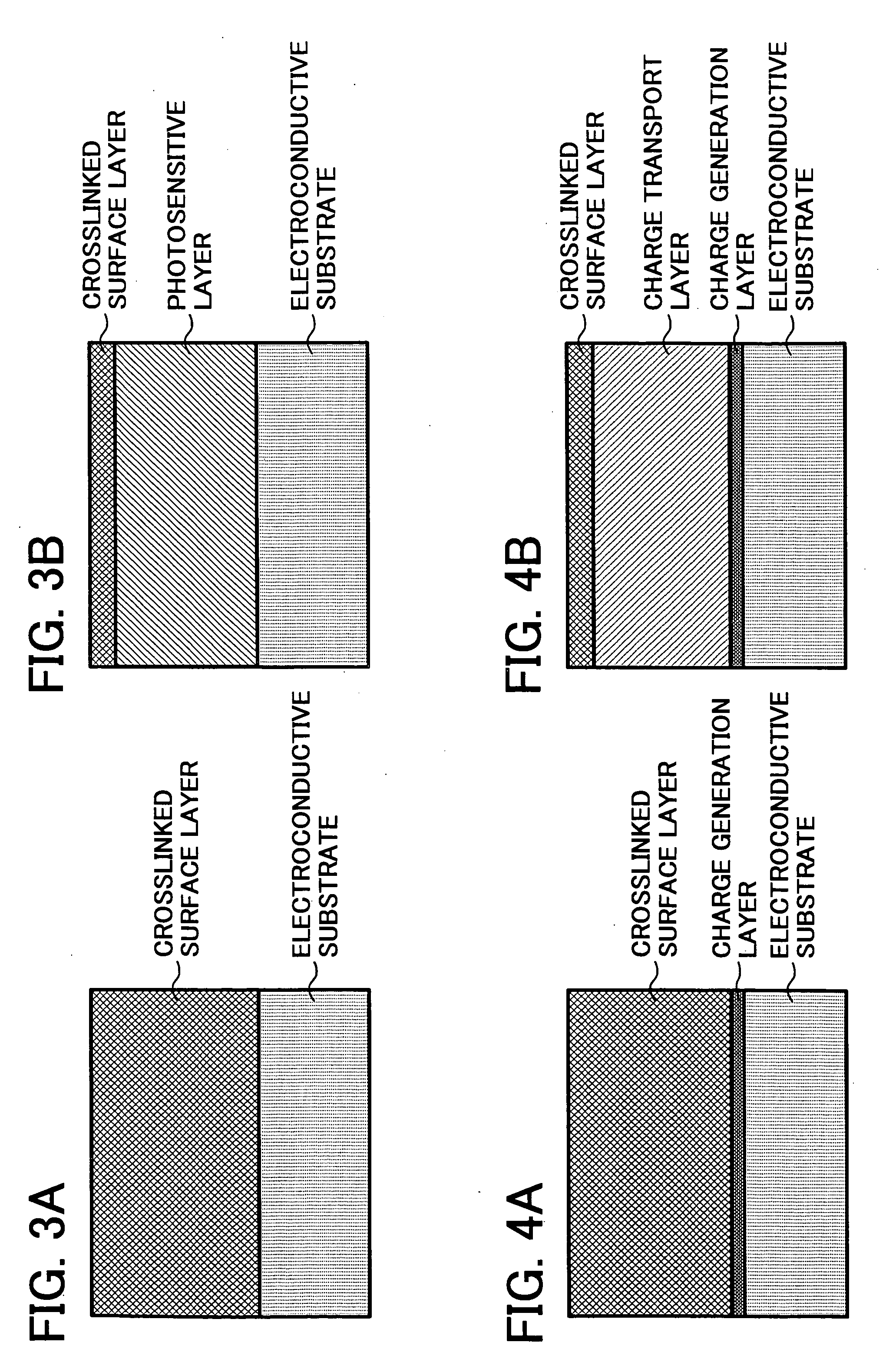Electrophotographic photoreceptor, and image forming method, apparatus and process cartridge therefor using the photoreceptor
a photoreceptor and electrophoresis technology, applied in the field of electrophoresis photoreceptors, can solve the problems of abnormal images such as image density deterioration and background fouling, photoreceptors using a hardening binder (1) tend to increase residual potential, and achieve higher quality images. , the effect of high image density
- Summary
- Abstract
- Description
- Claims
- Application Information
AI Technical Summary
Benefits of technology
Problems solved by technology
Method used
Image
Examples
example 1
[0192] An undercoat coating liquid, a charge generation coating liquid and charge transport coating liquid, which have the following formulations, were coated in this order on an aluminium cylinder by a dip coating method and dried to prepare a photoreceptor 1 having an undercoat layer of 3.5 μm thick, a CGL of 0.2 μm thick, a CTL of 23 μm thick.
Undercoat layer coating liquidAlkyd resin (BEKKOZOL 1307-60-EL from Dainippon Ink & Chemicals, Inc.)6Melamine resin (SUPER BEKKAMIN G-821-60 from Dainippon Ink & Chemicals, Inc.)4Titanium dioxide powder40Methyl ethyl ketone50CGL coating liquidBisazo pigment having the following formula:2.5Polyvinyl butyral (XYHL from Union Carbide Corp.)0.5Cyclohexanone200Methyl ethyl ketone80CTL coating liquidBisphenol Z-type Polycarbonate10Charge transport material having the following formula:7Tetrahydrofuran1001% tetrahydrofuran solution of silicone oil1(KF50-100CS from Shin-Etsu Chemical Industry Co., Ltd.)
[0193] The CTL was further coated with a cros...
example 2
[0195] The procedure for preparation of the electrophotographic photoreceptor in Example 1 was repeated to prepare an electrophotographic photoreceptor except for changing the urethane oligomer having a radical polymerizing functional group included in the crosslinked surface layer coating liquid to the following one:
KAYARAD UX-810180from NIPPON KAYAKU CO., LTD., having a viscosity of 20,000 ± 10,000 Pa · s)
example 3
[0196] The procedure for preparation of the electrophotographic photoreceptor in Example 1 was repeated to prepare an electrophotographic photoreceptor except for changing the urethane oligomer having a radical polymerizing functional group included in the crosslinked surface layer coating liquid to the following one:
U-15HA120from Shin-nakamura Chemical Corporation,having a viscosity of 45,000 mPa · s
PUM
| Property | Measurement | Unit |
|---|---|---|
| Fraction | aaaaa | aaaaa |
| Percent by mass | aaaaa | aaaaa |
| Pressure | aaaaa | aaaaa |
Abstract
Description
Claims
Application Information
 Login to View More
Login to View More - Generate Ideas
- Intellectual Property
- Life Sciences
- Materials
- Tech Scout
- Unparalleled Data Quality
- Higher Quality Content
- 60% Fewer Hallucinations
Browse by: Latest US Patents, China's latest patents, Technical Efficacy Thesaurus, Application Domain, Technology Topic, Popular Technical Reports.
© 2025 PatSnap. All rights reserved.Legal|Privacy policy|Modern Slavery Act Transparency Statement|Sitemap|About US| Contact US: help@patsnap.com



